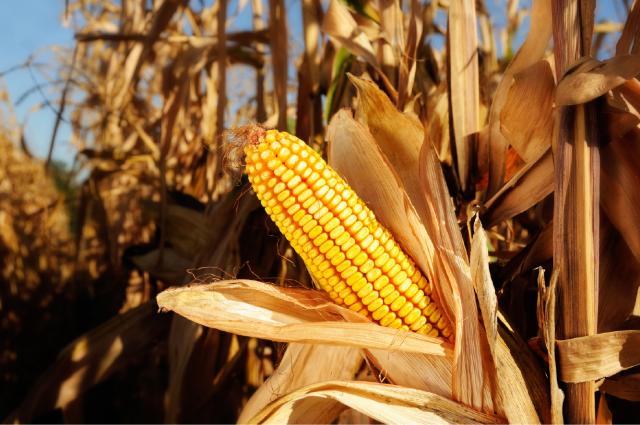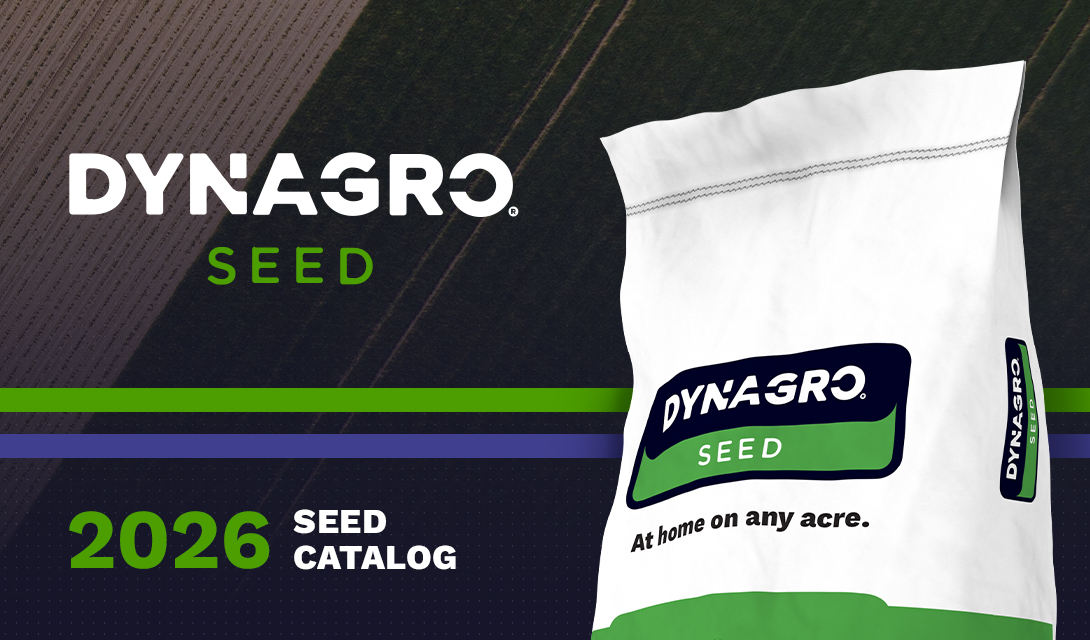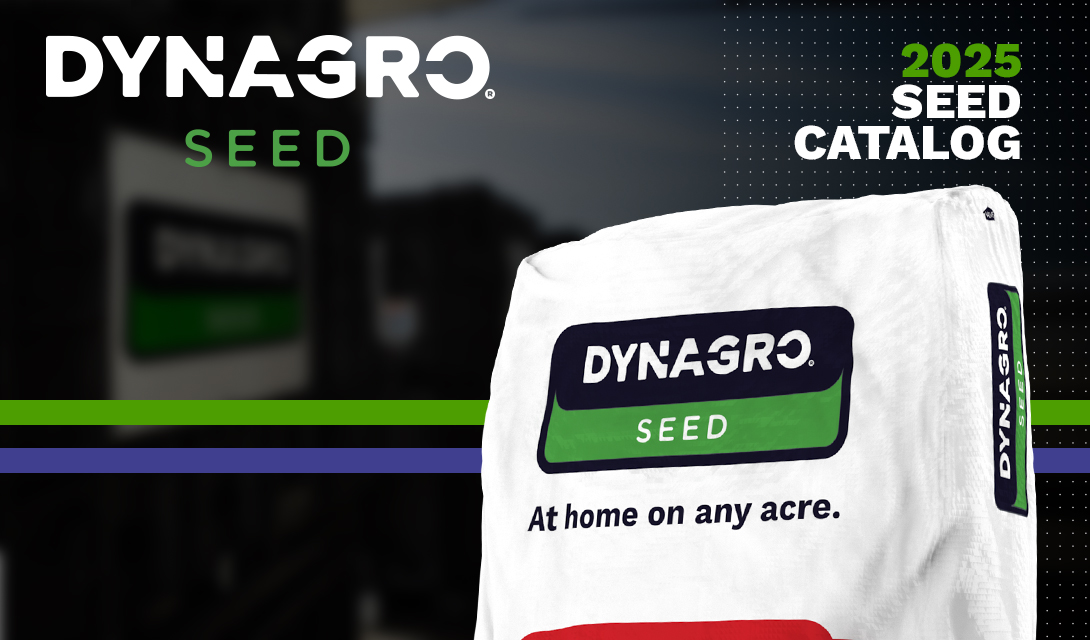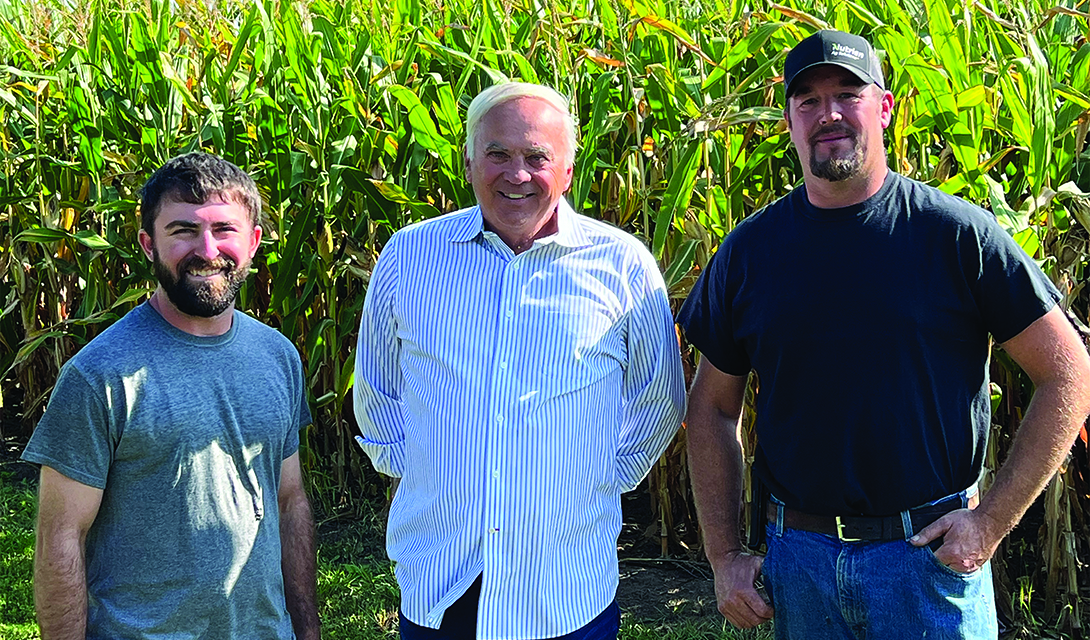Corn Germination Process
Sometimes questions arise concerning the length of time needed for corn to emerge. Following are a few of steps in that process of corn germination.
- Germination begins with water imbibitions (30% of kernels weight in water), starches break down, respiration increases
- Cell growth & elongation
- Radical (1st root) breaks through seed coat & anchors the plant
- Coleoptile ruptures seed coat; coleoptiles & mesocotyl both grow at the same time
- Coleoptile emerges from the soil & ruptures
- It takes about 125 GDU’s (Growing Degree Units) or heat units for corn to emerge. Plant is slowed drastically when soil temperatures or less than 55 ̊F and corn doesn’t grow at all when temperatures are less than 50 ̊F. GDU’s are calculated using the Maximum minus Minimum temperature divided by two, minus the 50 ̊F minimum temperature needed for growth. Because of this, it can take a week or up to 3 weeks for corn emergence.
- Example of GDU’s; 78 ̊F + 50 ̊F / 2 – 50; [ 128/2 equals 64 minus 50 ̊ equals 14 heat units. Eight days with that temperature yields 112 heat units and corn would be emerging.
- Another GDU example; 65 ̊F + 45 ̊F is 110. Divide by 2 is 55. Subtract the 50 ̊ base temperature and you have 5 heat units. With 5 heat units per day it takes 24 days to get 120 heat units.
- The longer it takes for plant emergence the less uniform the plant stand will be and the less uniform growth will be from plant to plant.
- Corn plants that are 1 leaf stage behind are generally 10 – 20% behind on yield. Plants that are 2 leaf stages behind have 50% less yield. Plants more than two leaves behind are essentially weeds.
- Corn leafing out underground, some causes;
- Cloddy soil allowing light to penetrate the surface - Soil compaction & crusting
- Herbicide injury
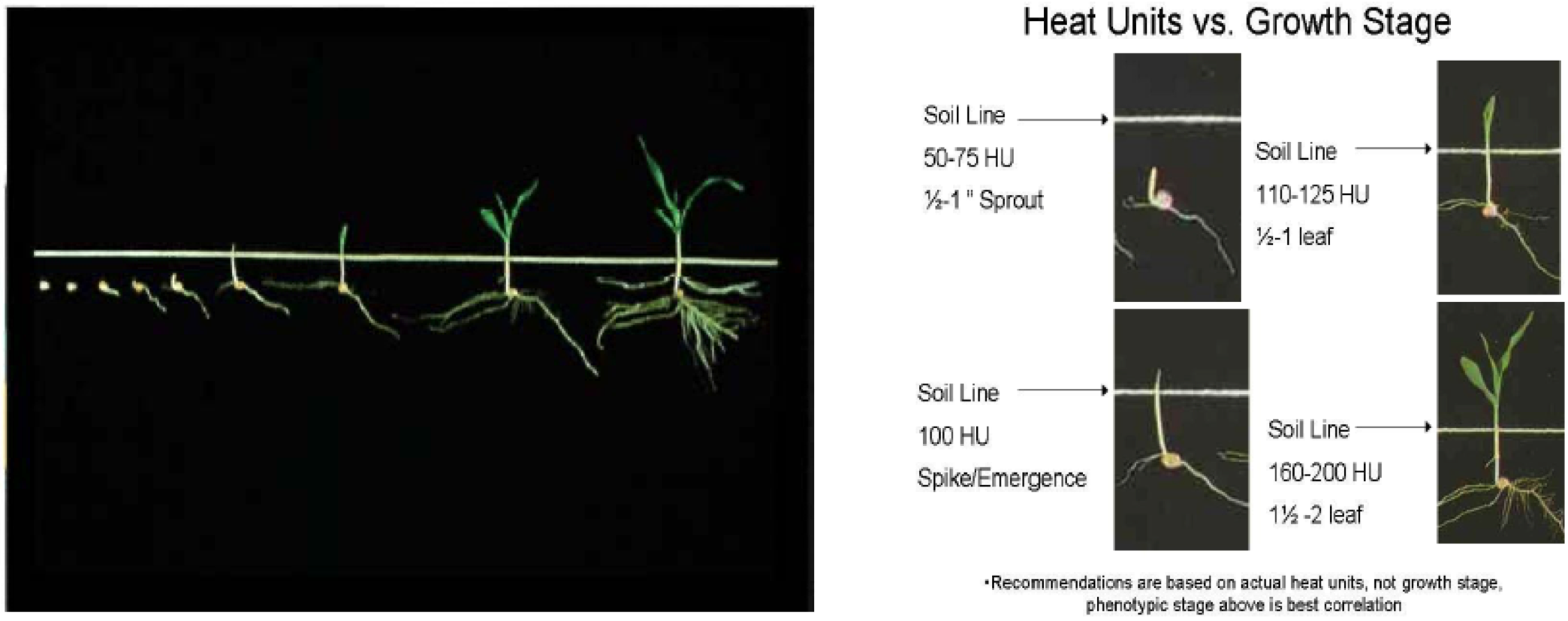
© Copyright 2012. This information may have been accumulated from publicly available sources outside of Dyna-Gro Seed, or its affiliates. Individual results may vary, and performance may vary from location to location and from year to year. This result may not be an indicator of results you may obtain as local growing, soil and weather conditions may vary. Dyna-Gro® is a registered trademark of Loveland Products, Inc. Featured logos are service/trademarks of their respective owners.
